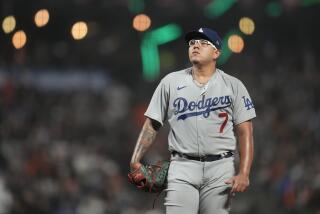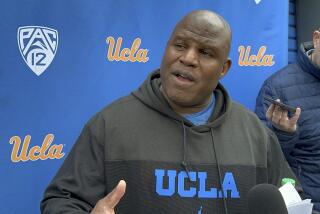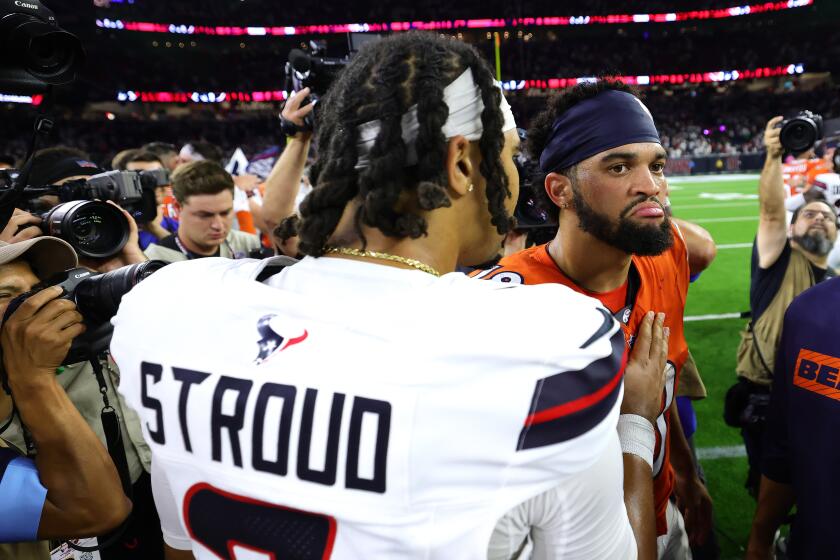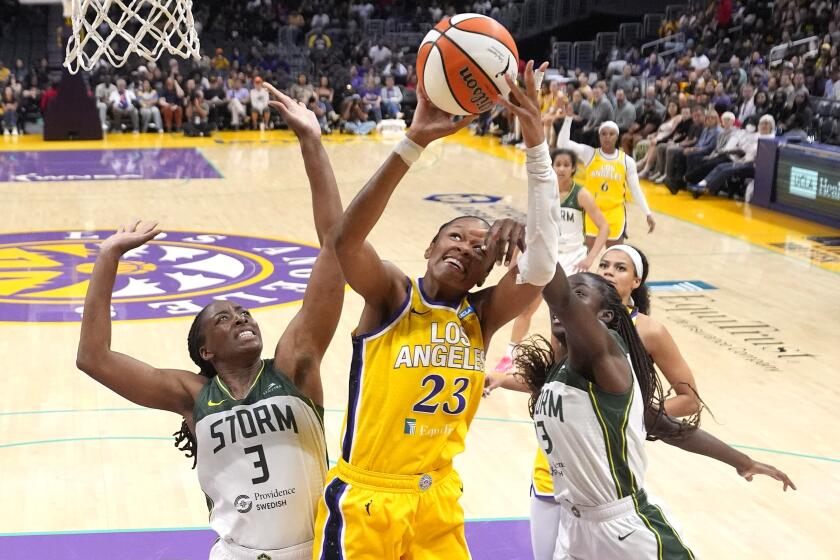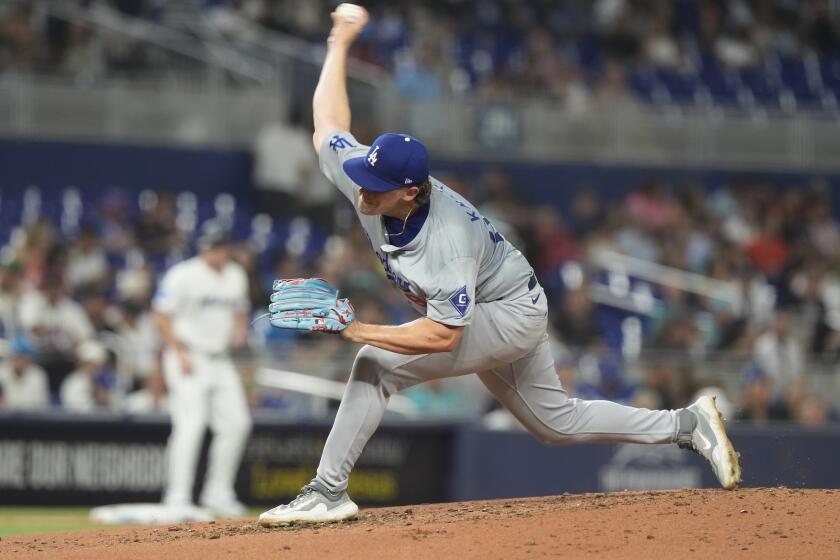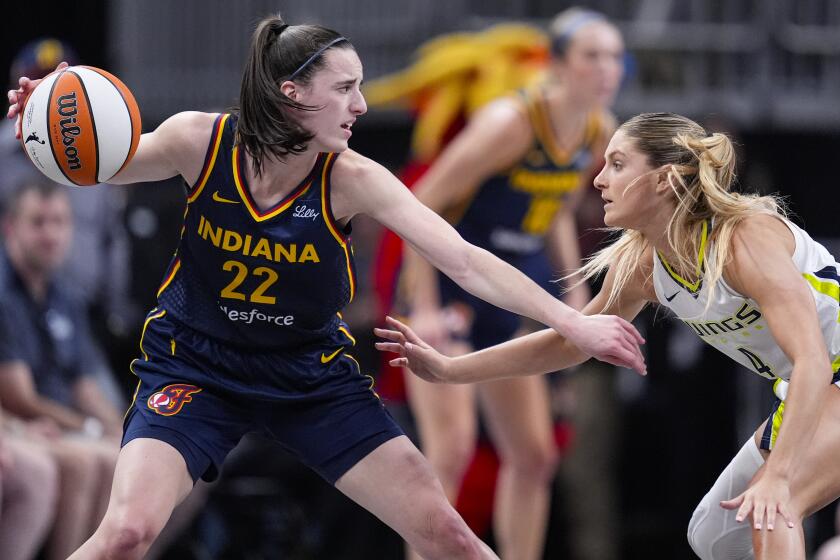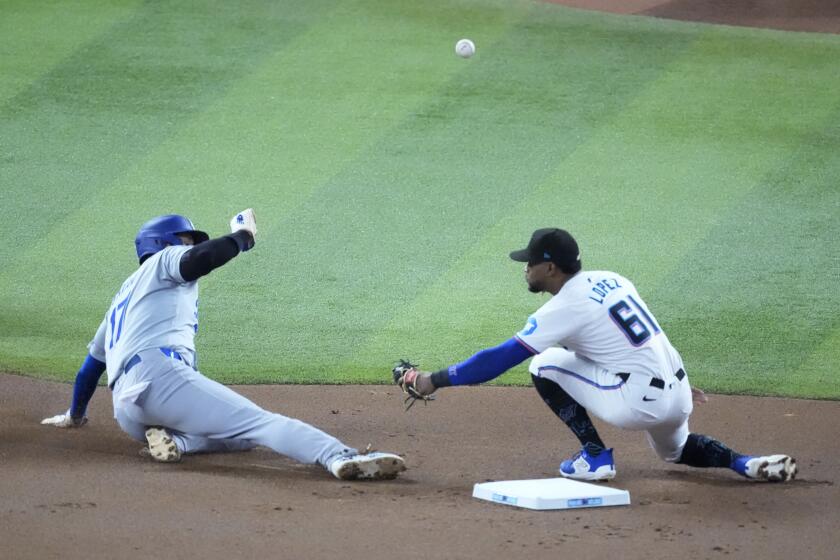He’ll Reach Hall of Fame Very Slowly
To win 300 games in the big leagues, you need a fastball in the 100-m.p.h. neighborhood. You need a curveball that cracks like a whip as it crosses the plate and breaks sideways at least at a 90-degree angle. It helps if you pitch out of a black scowling rage and whistle the ball dangerously under the chin of any batter digging in and striding.
If you haven’t got any or all of those things, well, then, you had better have this microscopic control that lets you put any pitch precisely where you want it, at precisely the velocity and trajectory.
Managers, you see, look for those things before they even let you draw a tryout uniform.
But what if your fastball is a soap bubble, or something that comes up there floating like a bottle thrown off a ship in deep water? What if maximum velocity on your hard one is in the low 50s? What if your “out” pitch is a 25-m.p.h loiterer that gathers cobwebs on its way to the plate?
A pitcher who showed up on the Milwaukee Braves’ tryout list 26 years ago had those highly questionable pitches. What’s more, he appeared to be of indeterminate age--the scouts guessed somewhere between 30 and 90--and he had sad eyes and a tired expression. He looked like a guy who had watched a lot of homers disappearing over the center-field fence in his time.
When they watched him pitch, they could guess why. You didn’t need a radar gun on his fast one. The s didn’t belong in the word. His pitch came up there like a kid going to a Saturday night bath or a con to the electric chair. Catching it was like bobbing for apples. You could do it with your teeth.
They let him down easy. They sent him so deep into the minors you needed a dog and canoe to get there. Nobody would be looking for him anyway. Unless they needed batting practice.
Then, they noticed a funny thing about Phil Niekro’s pitches. They were not only hard to time, they were harder to track. They made more detours on the way to the plate than a dog with fleas. Sometimes, they seemed to disappear altogether.
At the very least, they did a figure-8 on the way to the plate. It was as if they couldn’t figure out a sure direction. Even when the batter hit them, they sounded like a rotten cantaloupe.
Niekro didn’t exactly throw the ball, he just kind of let go of it, like a shotputter. And let gravity take over. “You don’t need a bat, you need a net,” batters complained. “It turns into a butterfly halfway.”
They called it a knuckleball for want of a better term. It wasn’t. It was really a fingertip ball. It was about as athletic as mailing a letter. It put no strain at all on the arm but a considerable strain on the catcher trying to plot its orbit.
It is a pitch not ordinarily perfected by a big leaguer until his arm is too tired to throw any other. But Niekro learned to throw it when he was in the sixth grade. His father, a coalminer, taught it to him so he wouldn’t have to spend his life wearing a light on his hat.
It is an old man’s pitch, but Niekro learned it before he shaved.
You never really master a knuckleball. It’s like mastering a grizzly. You more learn to live with it. Because it has no rotation, it is at the mercy of the wind currents--and gravity. It is a little bit like mailing a letter and hoping it gets there.
Control is not in the equation. The batter has no way of knowing where it is going because neither does the thrower. You just try to narrow the options.
Managers don’t trust it. They prefer pitchers who get sore arms. They tolerate it in older pitchers. But Phil Niekro was throwing it in high school. He got so he couldn’t throw more conventional pitches because knucklers lock up the arm from wrist to elbow.
It took Niekro six years to get his big-league trial. Even then, the Braves were skeptical. Twenty-year-olds don’t throw knuckleballs. Twenty-year-olds throw heat.
They threw him in the bullpen. He started only 2 of the first 100 games he pitched. In seven years, he started only 5 of 177 games.
Even when he started 29 games at Denver in 1964, finishing 21 and winning 11, no one was convinced.
Finally, after the Braves had moved to Atlanta and needed help in 1967, they handed Niekro the ball. He started 20 games, finished 10 and had an earned-run average of 1.87. Two years later, he started 35, finished 21, and won 23. “You sure you’re 29, not 49?” they asked.
Phil Niekro may have done more with less than anyone who ever played the grand old game. He has now won 296 games with a pitch that comes in so slow that not only can you count the stitches on the ball, you can read the league president’s signature. You can do everything with it but hit it or catch it.
Only 17 players in history have won more games than Niekro. Only nine have struck out more batters. Only 11 have pitched more innings, and only six have started more games.
He is a cinch to make the Hall of Fame. But he has never made a World Series. He is getting his big chance now with the Yankees, who are storming after the division leaders.
Sentimentalists think it may be his last chance. But in the 1978 All-Star game, sentimental National League Manager Tom Lasorda put Niekro in to pitch to one batter, thinking it might be Niekro’s last chance. Seven years later, he could be facing Niekro in the opening game of the 1985 World Series.
It’s certain the arm won’t give out. Wrapping spaghetti around a fork puts more of a strain on it than throwing a strike. As for his age, Lasorda notes: “He looked 46 when he was 26. He has knuckleballed time.”
To get to the Hall of Fame on stuff he admits moves at only 25 m.p.h. is a feat for the ages. They should put his plaque 25 feet in front of Walter Johnson’s, because that’s where he’d have to release it in order for their pitches to get to the plate at the same time.
More to Read
Go beyond the scoreboard
Get the latest on L.A.'s teams in the daily Sports Report newsletter.
You may occasionally receive promotional content from the Los Angeles Times.

